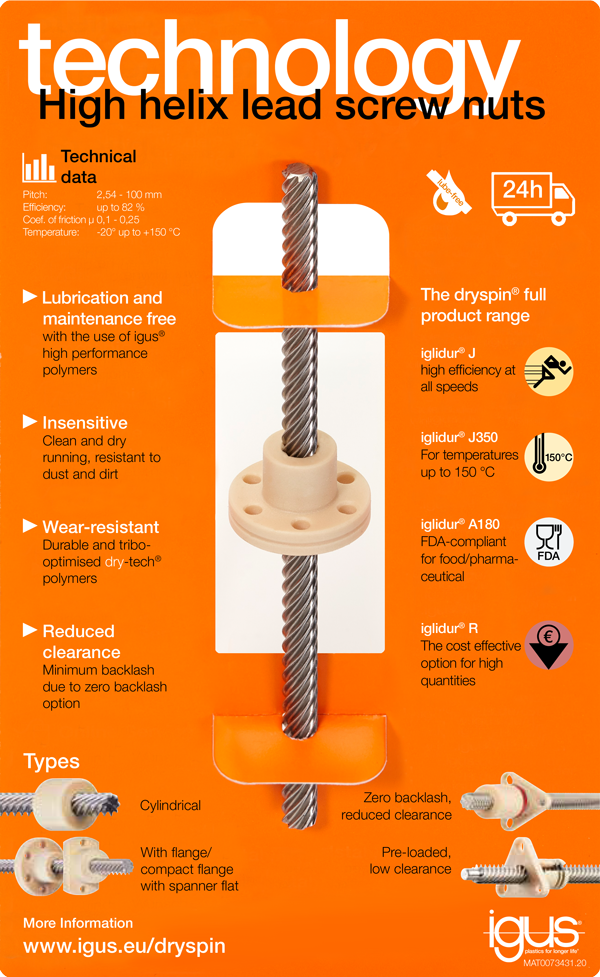dryspin lead screw technology
Zoe Moser | 25. September 2020
The dryspin® lead screw technology and its numerous thread sizes
What is dryspin technology? What advantages does it offer compared to conventional high helix thread?
And what thread sizes are available for dryspin lead screw technology?
Let’s start with some general information
The dryspin lead screw technology was developed and patented in 2016 by the drylin lead screw technology development team. Particular emphasis was placed on increasing service life and improving efficiency. The dryspin product portfolio includes high-helix lead screws made of stainless steel or aluminium and the matching lead screw nuts made of igus high-performance polymers. They are available in pitches from 2.4mm to 100mm. The dryspin high-helix thread geometry is an extension of conventional thread technologies such as metric and trapezoidal threads. In contrast to conventional lead screw geometries, dryspin lead screw technology scores with numerous advantages. Let us take a closer look at them.
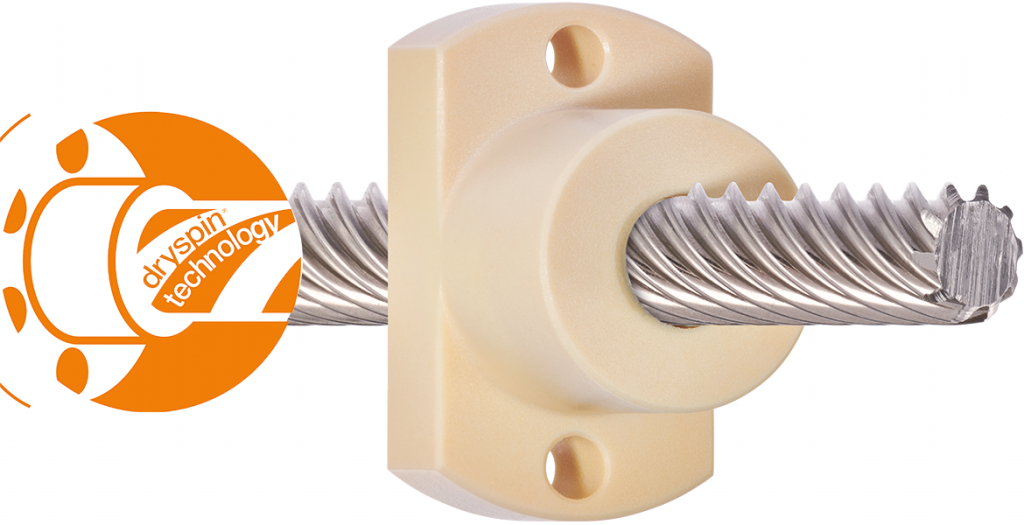
► Higher effectiveness
► Low-noise and low-vibration operation
► Longer service life due to asymmetry
► Reduced wear
► Higher efficiency
Advantages of dryspin lead screw technology
In contrast to a metric or trapezoidal thread, the high helix thread has a higher pitch. This means that a small radial movement is converted into a relatively large axial movement during one revolution of the lead screw. dryspin offers better efficiency due to the specifications and geometries matched to the polymer nut and lead screw. Efficiencies of up to 82% and a longer service life are achieved compared to metal lead screw drives. In combination with an igus lead screw nut, clean and dry operation is possible without dust and dirt sticking to it.
The dryspin high helix threads are not self-locking. This means that the lead screw nut and lead screw can be moved even without applying external force. But why? You can read more about this in our blog post: Self-locking – what exactly is it?.
Higher efficiency due to optimised thread angle
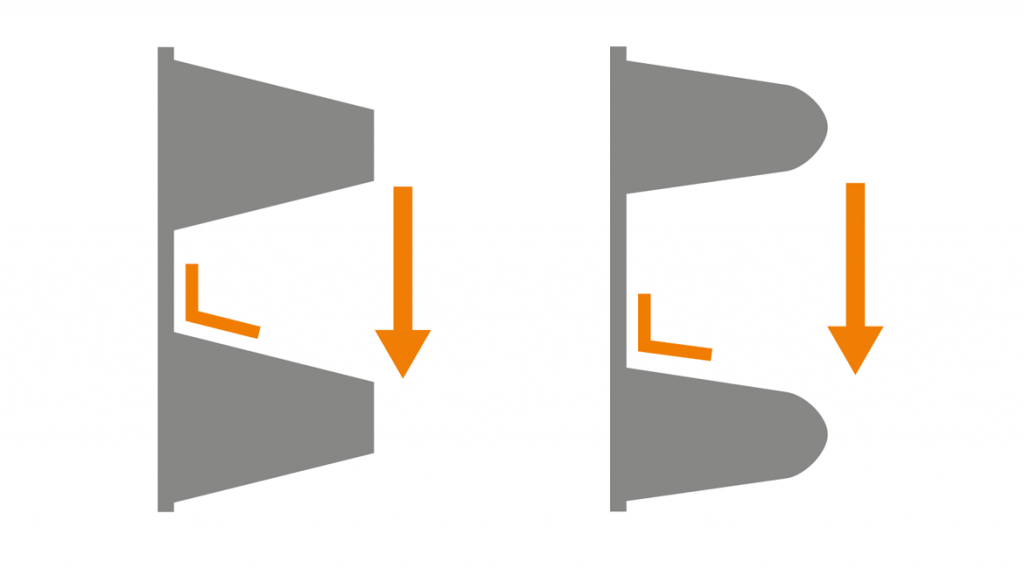
Right: flat flank angle, dryspin® geometry
The dryspin lead screws have a flatter flank angle than conventional high helix threads. In this way, the lead screws efficiently convert the applied force into a translatory movement.
Compared to a steeper flank angle, the loss of force is lower and efficiencies of up to 82% are achieved.
Low noise & vibration-free running due to rounded teeth

Right: round tooth angles, dryspin® geometry
Due to the rounded tooth geometry, the contact surface between the lead screw nut and the lead screw is reduced. This is due to the fact that the greater the contact of two surfaces moving against one another, the more vibrations are transmitted, which can be perceived as a rattle or squeak. The rounded teeth minimise this effect and the thread moves vibration-free and virtually noise-free.
Longer service life due to asymmetry
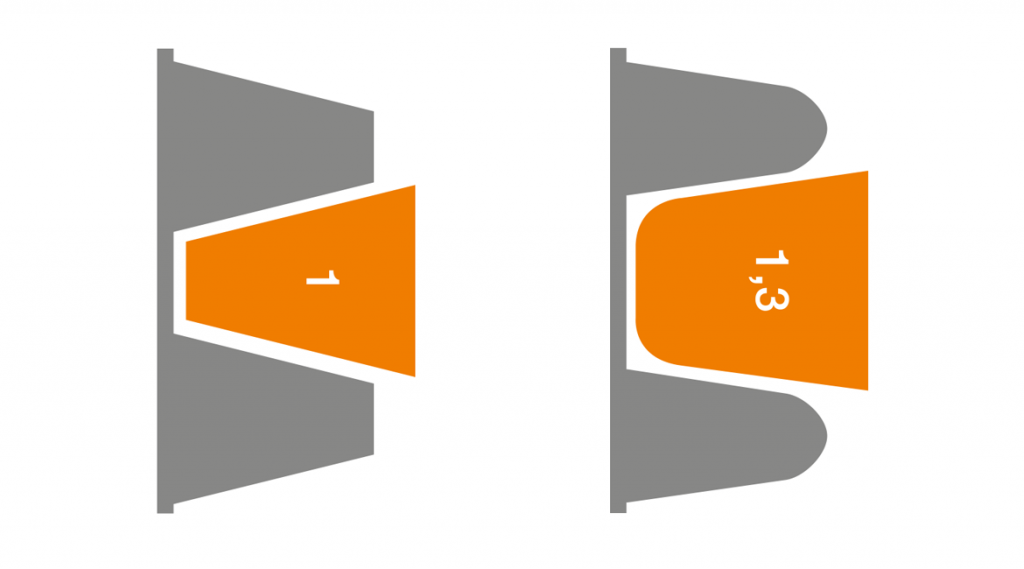
Due to the larger distances between the individual dryspin® thread turns, the thread ideally matches the specifications of the lubrication-free igus® high performance polymers. The proportion of the tribologically optimised polymer in the thread turns can be enhanced by a factor of 1.3 for all sizes. More wear-resistant material and higher levels of efficiency are crucial for a service life that is up to 5 times longer compared to standard thread geometries.
The larger the lead screw diameter, the stronger the impact of this effect. Backlash can be minimised by the use of dryspin zero-backlash lead screw nuts with integrated spring pretension. Find out more about our anti-backlash and zero-backlash lead screw nuts in our blog post: Polymer lead screw nuts and the axial clearance.
Production of dryspin lead screw technology
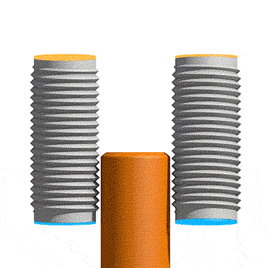
Our standard manufacturing process for dryspin high helix lead screws is thread rolling. Here the thread is rolled onto the raw material by two tools. The higher surface quality produced by cold forming provides increased tensile strength, or shear and fatigue strength. This results in a longer tensile strength. A detailed explanation of the manufacturing processes for lead screws can be found in our blog post: Rolled vs. Whirled! The manufacturing process of the lead screw is briefly explained.
Dimensions and innovations
In addition to the different versions of the lead screw nut, dryspin technology scores with something else: its numerous thread dimensions. The dryspin development team works tirelessly to develop new dimensions. We also offer almost all lead screw nuts as right-hand and left-hand threads. So we can proudly say that the dryspin product range has grown considerably in recent years and is being expanded year after year. The dryspin technology makes it easy to replace conventional ball threads.
This year again, we have not let up and have extended our product range by three thread sizes: 6.54X2.35 LH, 16X10 and 20X5. The 16×5 and 20×10 sizes will follow by the end of the year. We have also developed a lead screw nut particularly for heavy-duty applications. Due to its special type, it can take even higher loads. Learn more about our innovations in 2020 and the JGRM lead screw nut.
Here you will find an overview of all available sizes in dryspin lead screw technology:
